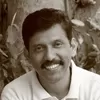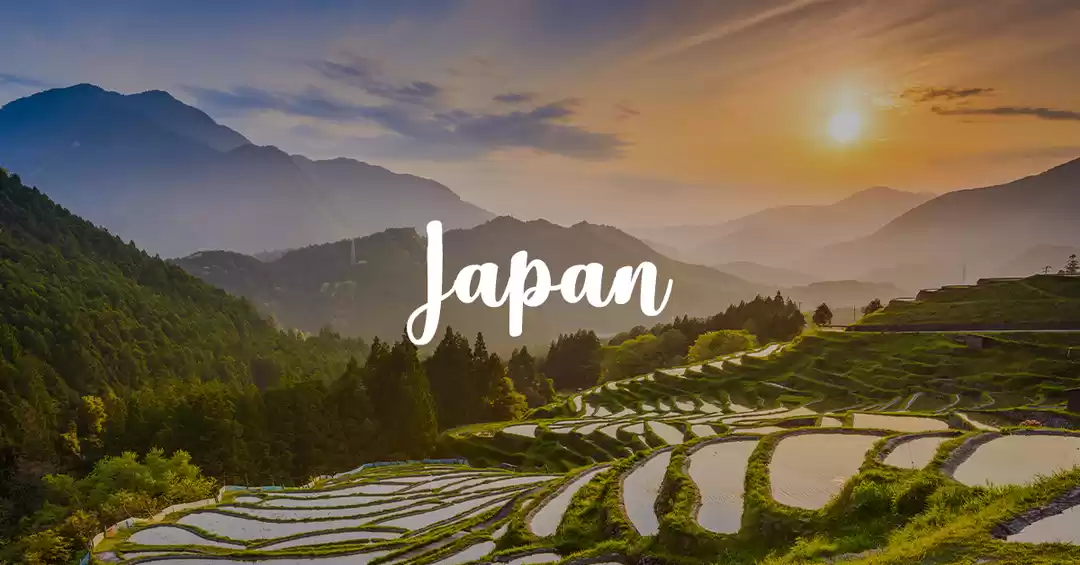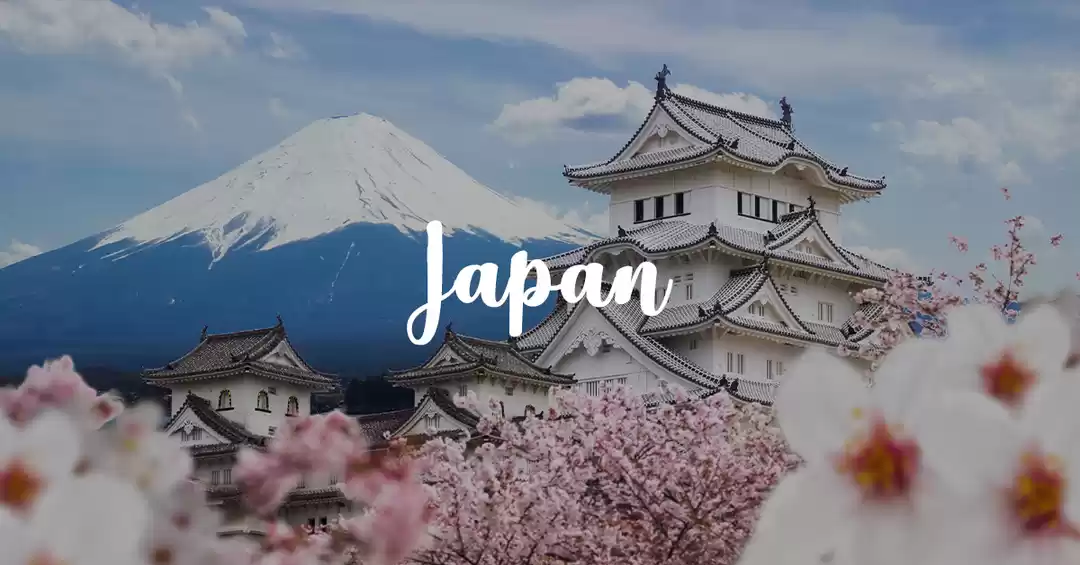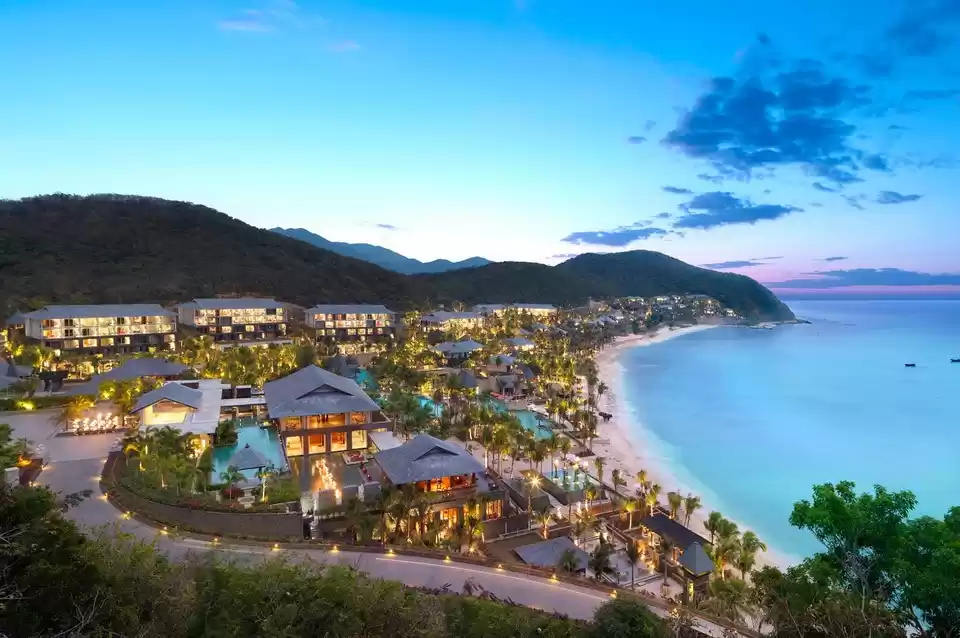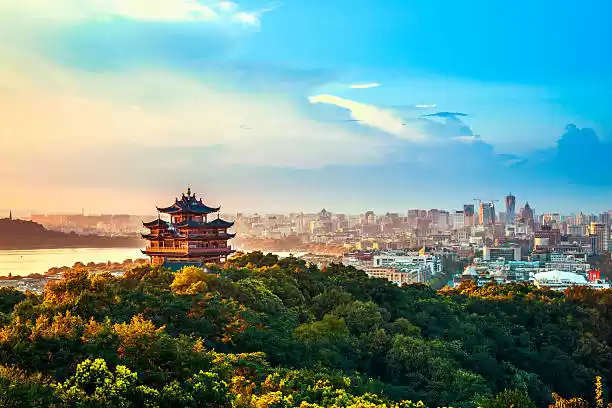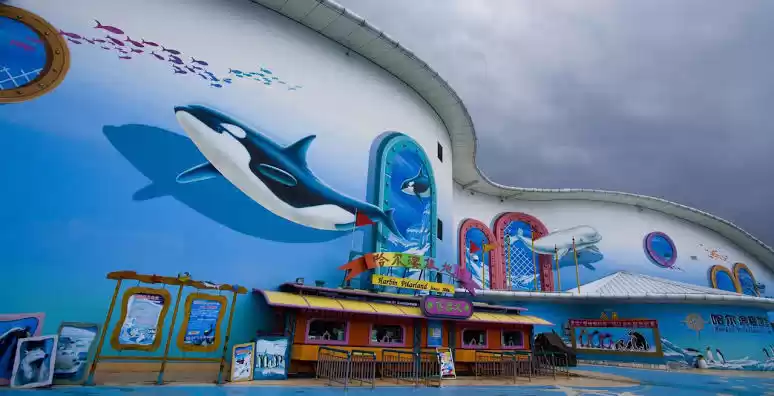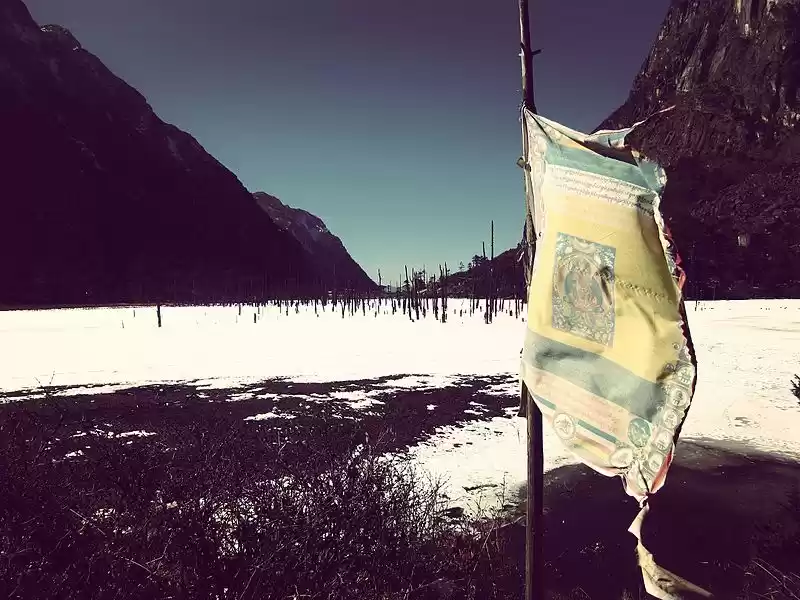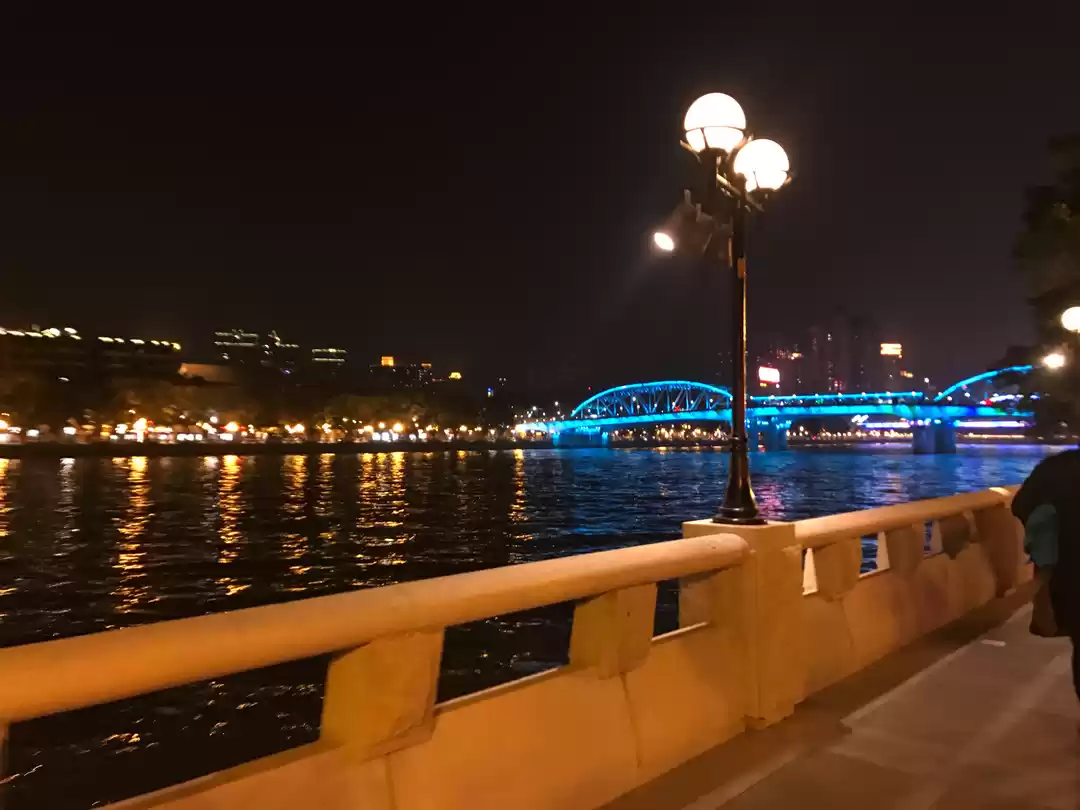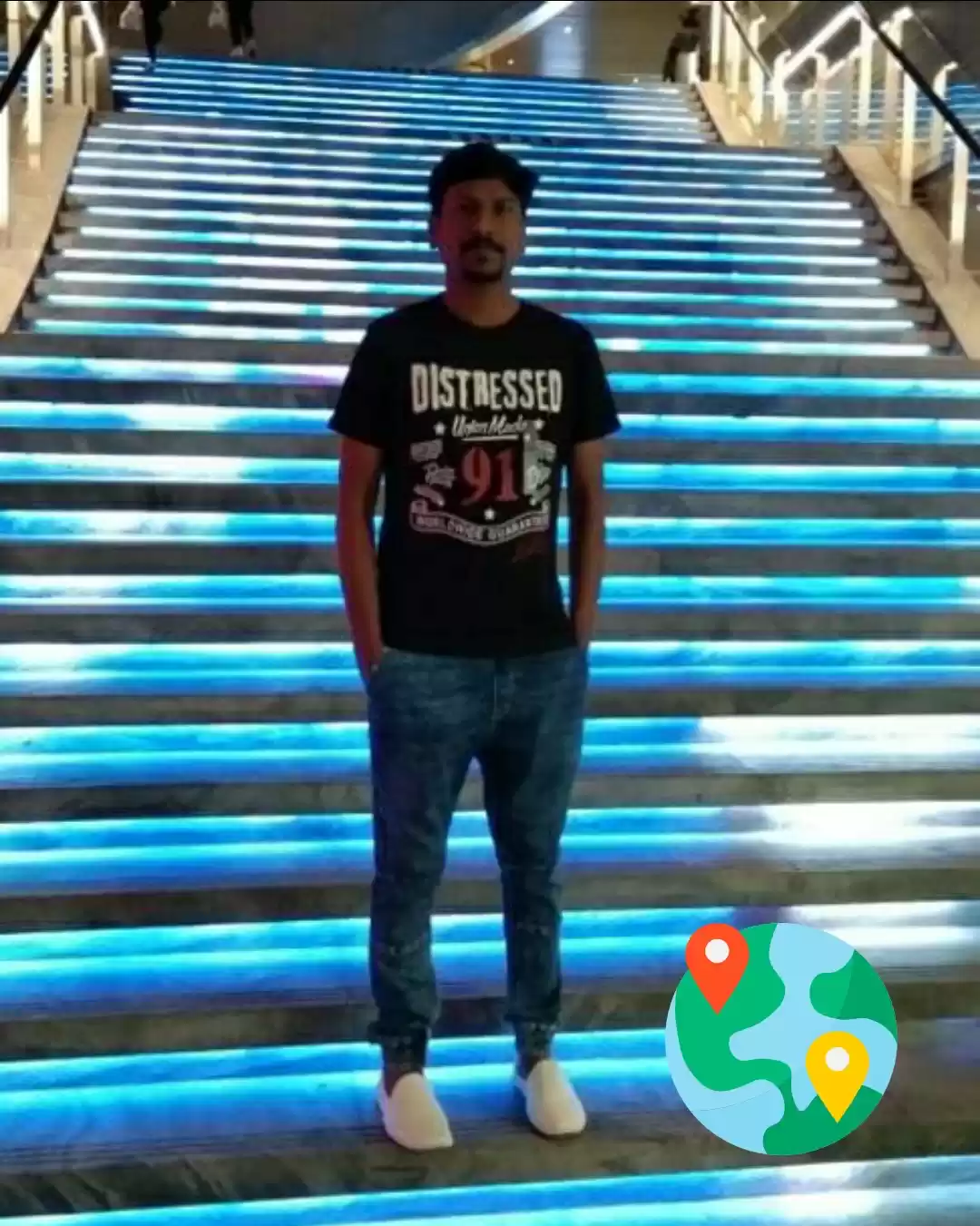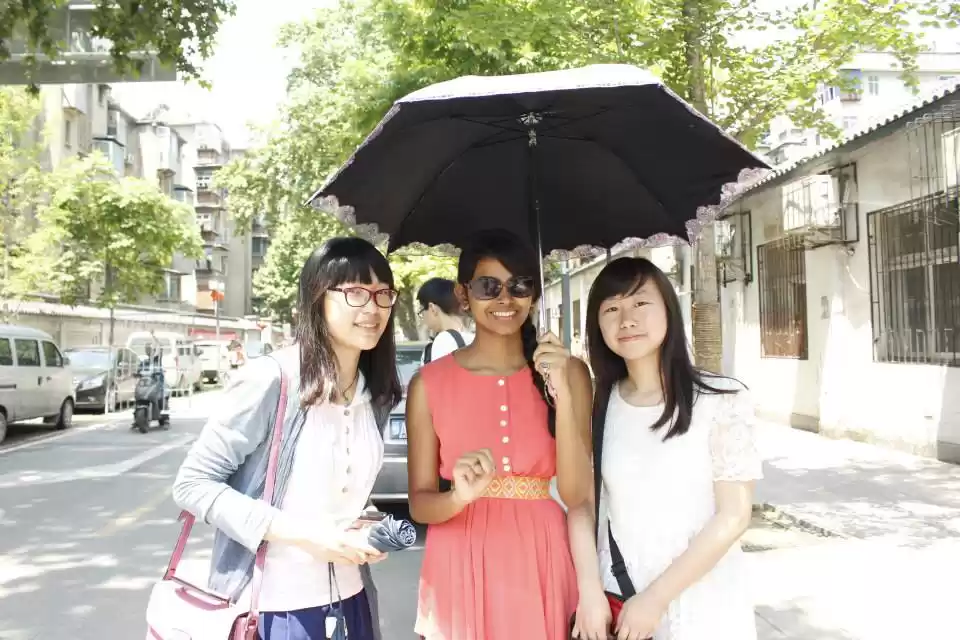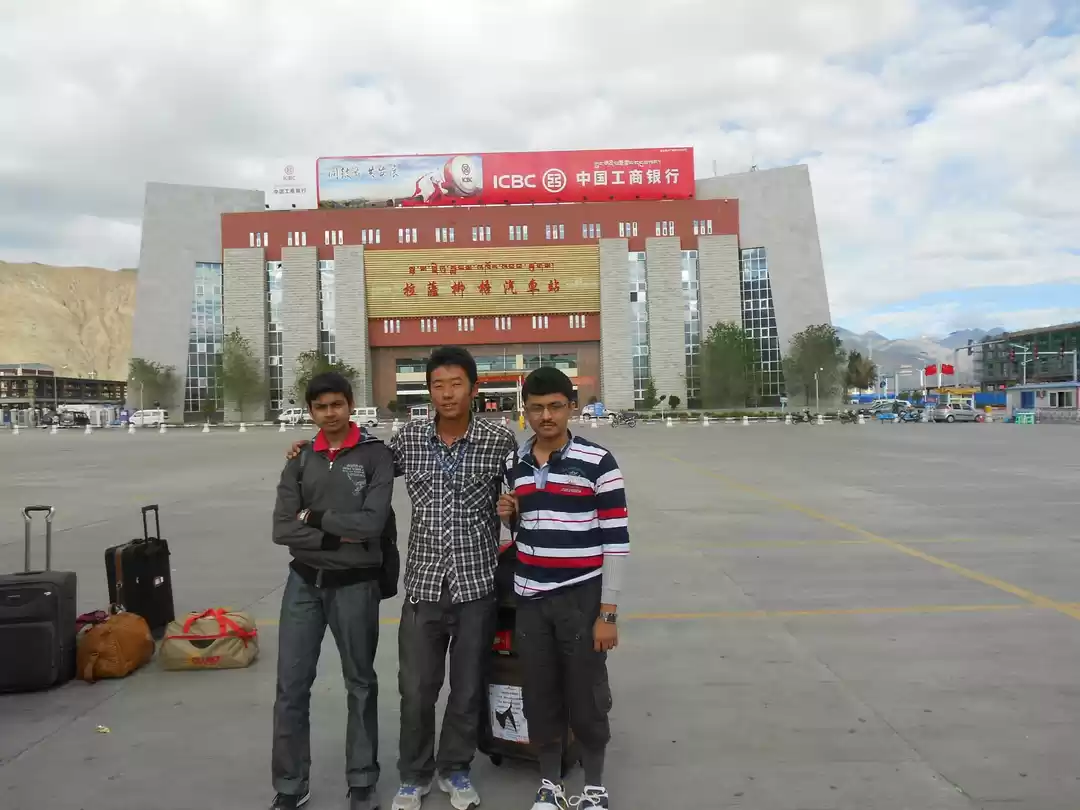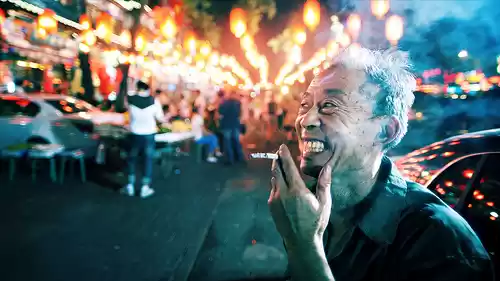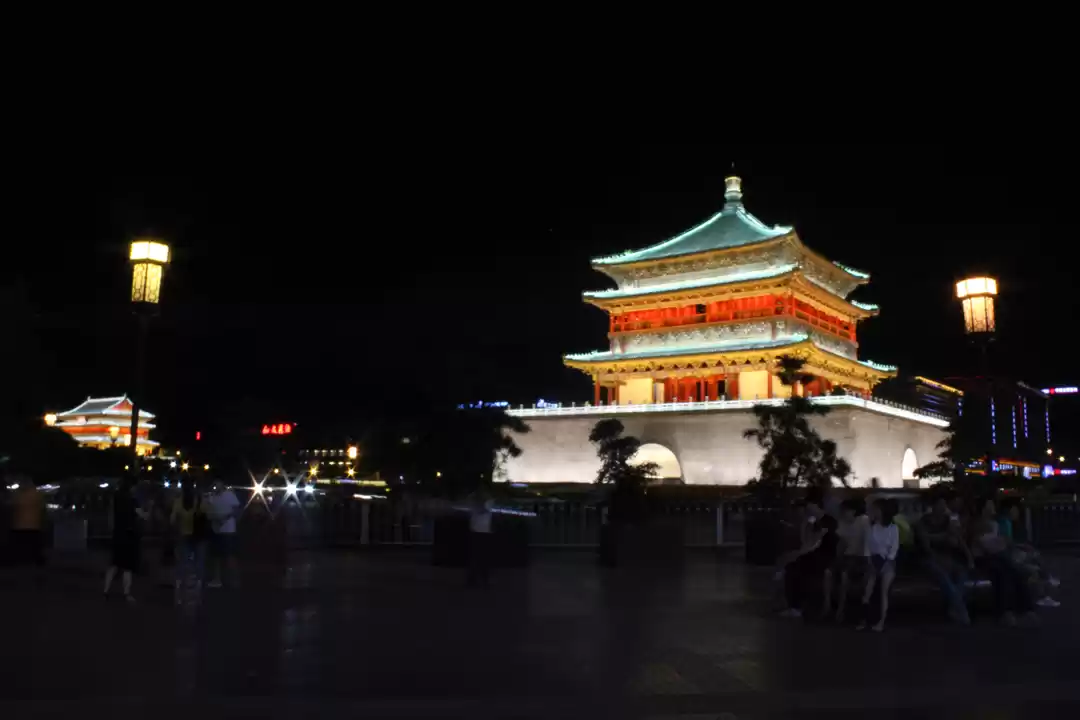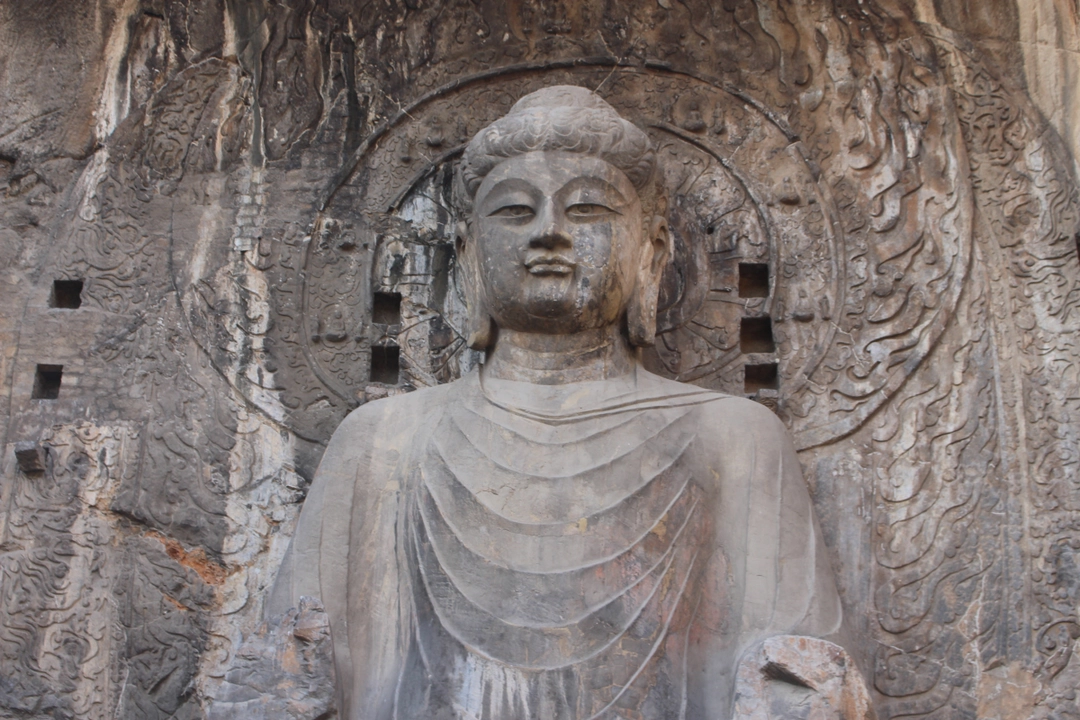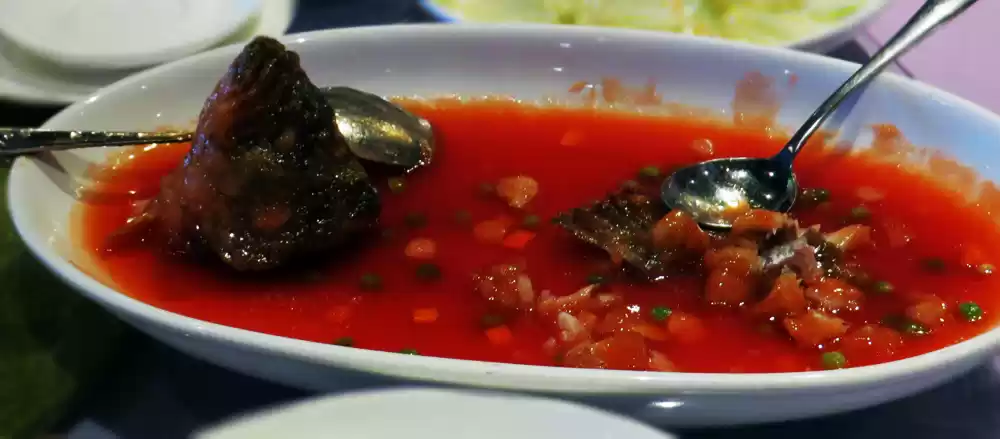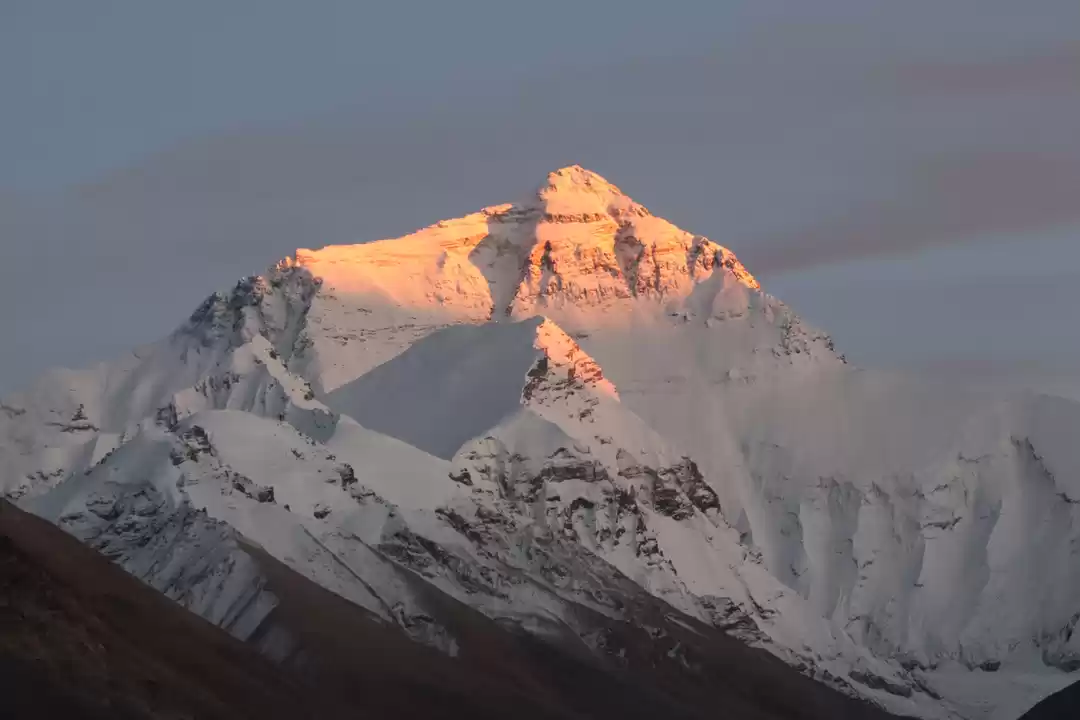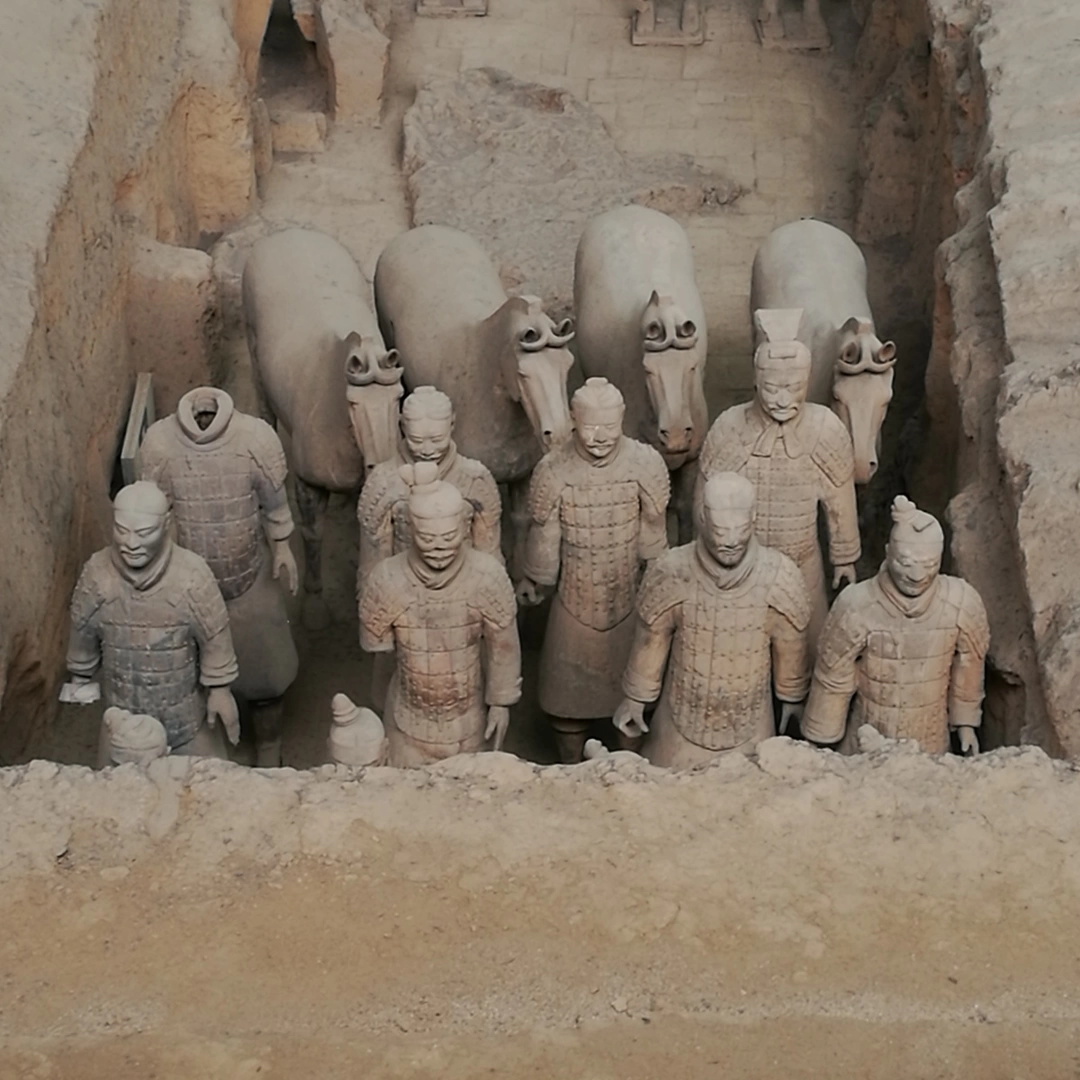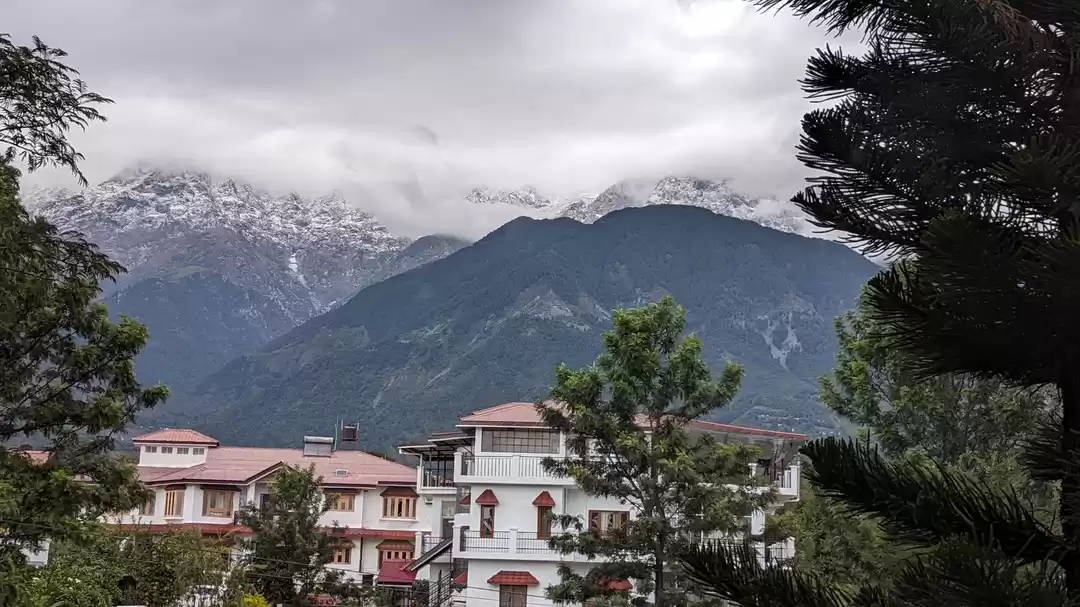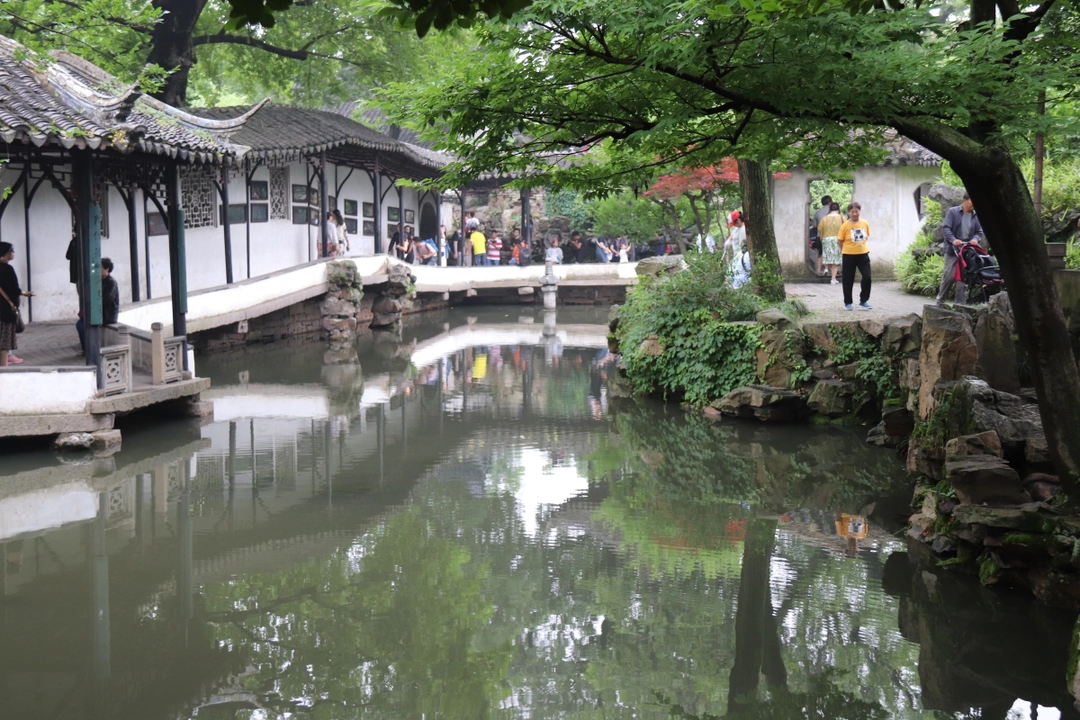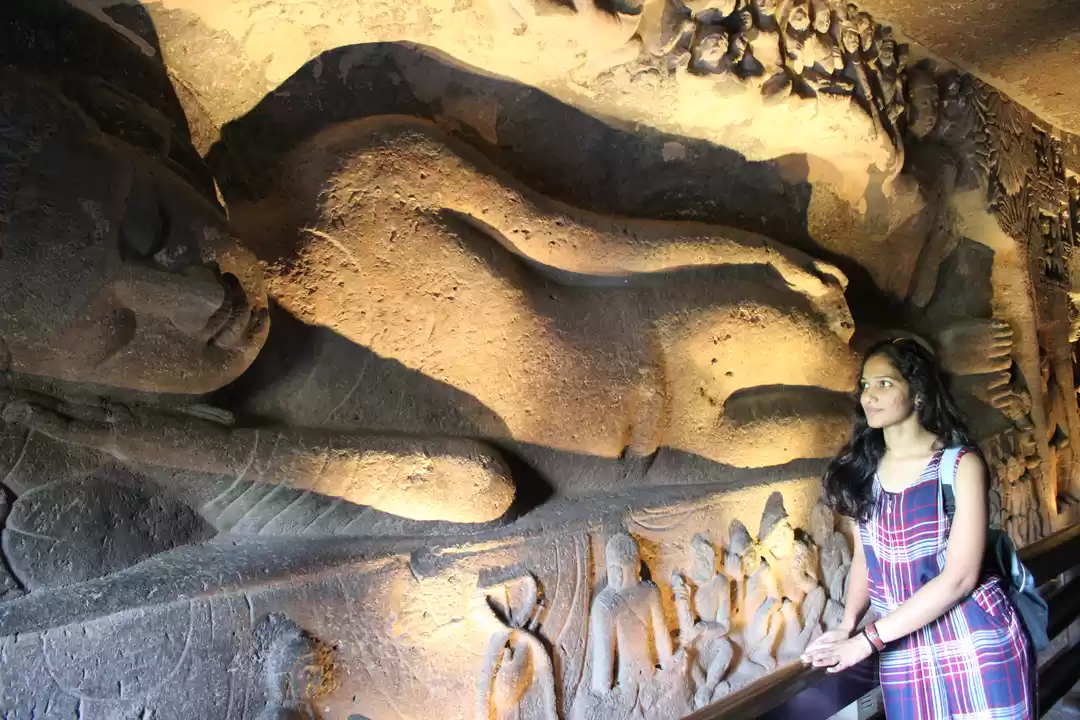
The trip to Shanxi was our first effort with a professional tour guide. Hari and I travelled to Shanxi during the long weekend dragon boat festival in April 2016. The deal was 4120 RMB for three nights including the speed train tickets.
At the Beijing west station, there was a person waiting for us with the tickets. We started at 10.10am and the journey was good. Around 12, we had lunch in the train. The train reached Taiyuan south station at 1.10pm. The station was very impressive. Our guide, Ms Minna Tan, was waiting for us. We were taken in a 7 seater car to WuTai Mountain (Wutai Shan). The drive was very beautiful and the roads were amazing. There were also many tunnels on the way. Our first stop was after about an hour, the Baiyun temple (Baiyun Si). The front arch was very impressive. This was not in the schedule, but looking at the arch, we asked Minna and she was considerate. She also explained the main features of a Buddhist temple. In the brochure that was given, it was mentioned hiking the Wutai mountain and I was enthusiastic. Minna clarified that it is a translation error and there is no hike.
The Mount Wutai scenic area of Shanxi province is one of the four most prominent Buddhist Mountains in China and a home of the Manjusri Bodhisattva. Baiyun Si (white cloud temple) has a magnificent view of the surrounding landscape and is rich in Buddhist traditions. It was built during the Tang Dynasty (618-907AD) by a local government official and reached its height of architectural splendor in the Song Dynasty (960-1269). Throughout its history, the temple was destroyed in many ways but has now revived the splendor of yesteryear under the stewardship of the Master Changlong and the Buddhist rites and services on the square in front draw a wide range of followers. The Baiyun temple has great architecture and has many beautiful statues. The sequence of halls that we see here: entrance hall, courtyard, main hall, courtyard, secondary hall, is the standard layout for Chinese temple and palace compounds.


















































We left the place at 5.00pm and arrived at the next destination, the Zhenhai Temple at 5.15pm. This is named after the nearby Zhenhai tower on the submarine spring, was built during the Ming dynasty. From Qing dynasty to the republic of China, Buddhas lived here. Now it is a school temple of Tibetan Buddhism. Minna explained few things like how size of the temple is indicated by the statue of Skanda (Wei Tuo), like if he is holding his sword upward, across or downwards. She also told about the accompanying bodhisattva, Guan Yin and the four colored kings of the four directions. Duō Wén Tiān (Vaiśravaṇa) is the guardian of the north, Zēng Zhǎng Tiānwáng (Virūḍhaka) is the king of the south, Chí Guó Tiānwáng (Dhṛtarāṣṭra) is the king of the east and Guăng Mù Tiānwáng (Virūpākṣa), king of the west. Zhenhai temple has a living Buddha stupa built in 1786 and a hall of Three Buddhas. We could see one statue of the Buddha sporting a beard here. That evening we went around and visited one more temple that was near the hotel. It was called the Puhua temple. It had a very nice screen wall in front. It was 15.6 meters long, 8 meters high and 1.6 meters thick, supposed to be the longest wall in Mount Wutai. Even this temple had the standard format, laughing Buddha in front, bodhisattva with sword on his back, the four direction kings, three sitting Buddhas with different mudras, and the fair and dark warriors next to them. We finished around 7.30pm, had dinner and rested in Youhao hotel, which was comfortable.
Next morning we had breakfast the hotel by paying 10RMB each and visited a huge temple complex. It had the Cauldron temple, Pusading temple and the Tayuan Temple that has the Great White Pagoda (Dabai pagoda) or Sarira Stupa. There were other temple like Guanghua Temple and Shuxiang Temple, but we had to skip as we needed to reach the next destination, Datong, early. We had lunch on the way, passed Datong and reached Hengshan around 3.00pm. The sight of the hills on the way was beautiful.
There were enough holiday crowds at the place. The first sight of the hanging ('suspended' as the Chinese like to refer) temples was amazing. These were built in the late years of the Northern Wei Dynasty (around 471-523 AD), some 1,400 years ago. It was repeatedly renovated in later dynasties, but the original structure remained unchanged. The existing building is the result of the renovations carried out in the Ming and Qing dynasties. The temple is an example of co-existence of different cultures. Three Religions Hall enshrines the statues of Buddha, Laozi and Confucius, who represent Buddhism, Taosim and Confucianism respectively. It was about 4.45pm by the time we got our chance to step on to this wonderful monument. As the platforms are narrow and the structures are delicate, they let only the right number of people at a time. We returned to Datong and had the famous Hotpot dinner. The hotel where we stayed at Datong was nice. The complimentary breakfast was good.
We reached the entry gates of Yungang Grottoes ( Yúngāng Shíkū) around 9am. This world heritage site with 252 caves and 51,000 statues, represent the outstanding achievement of Buddhist cave art in China in the 5th and 6th centuries. The Five Caves created by Tan Yao, with their strict unity of layout and design, constitute a classical masterpiece of the first peak of Chinese Buddhist art.
The entrance and the route to the Grottoes have many Buddists figures made out of stone and wood which were made much later. The place is very well maintained, in spite of the large crowd it receives. The caves are all numbered and have unique names. Some of the caves have figures that are painted. Since the end of the works, the sandstone of the grottoes has been exposed to heavy weathering. The ensuing centuries therefore saw several attempts to preserve the caves and to repair sustained damage. The wooden building extensions of caves 5 and 6 were constructed in 1621, during the early Qing Dynasty. Since the 1950s, cracks in the sandstone have been sealed by plastering, and forestation has been implemented in an effort to reduce the weathering due to sandstorms. The 53 grottoes include some 1,000 slots with about 51,000 statues, a treasure-trove of cave art that combines traditional Chinese art forms Greek and Indian influence. Sculptures here are noted for their details and rich variety that range from the smallest, only 2 centimeters high, to the tallest, Buddha 17-meters high. The tallest Buddha is surrounded by many small Buddhas in Grotto No. 5, also called the Big Buddha's Cave.
Visiting the suspended temples and the Yungang's grottoes was a really fulfilling experience. We moved on to the next spot, the famous house of Shanxi - Qiao's Grand Courtyard, a bright pearl in the history of the residential building in the north china, known as folk-custom museum of Shanxi. The place became more famous due to the novel and TV series that came out about this. There are many figures representing the life during the 18 th century life and trade.
After seeing Qiao's Grand court yard, we traveled by the car to Pingyao ancient city, which is also a world heritage site. The car stopped outside the boundary wall (the ancient town streets have no access to motored vehicles) and we walked to our hotel (Tian yuan kui guesthouse) which was also like a heritage building. After freshening up, we walked in the streets of the ancient city.
Pingyao Ancient Town started from Ming (CE 1368-1644) and Qing (CE 1644-1911) Dynasty reconstructions. It is laid out in what is called a ba gua ("eight diagrams") pattern. Each of these eight diagrams, consisting of three lines each (called trigrams), corresponds to a fundamental concept of Taoism (Daoism): earth, wind, fire, water, sky (or heaven), thunder, mountain, and lake. The ancient town, with its particular arrangement of 6 gates (2 on each side and 1 at each end, and each consisting of double doors) is meant to resemble a turtle: the single gates at either end represent the turtle's head and tail, while the remaining gates represent the turtle's four legs. In addition, there are 2 wells near the "head" gate, suggesting the eyes of the turtle.
It was a wonderful experience seeing the streets full of life selling memorabilia and traditional food. It was drizzling a bit and we witnessed a set of two beautiful rainbows in the sky behind the tower.
Next morning, again we walked on the streets of the ancient town and saw a nine dragon wall and an old Church. At 8.30am, Minna took us to sightseeing. We saw many shops selling vinegar. There were many handicraft shops, particular one was the Wentao Papercut Shop. We walked on the border wall and could see the plan of the city. After that we visited the Confucian temple. Around 10.15am, we went to the former residence of Lei Lutai, the founding father of the Ri Sheng Chang Bank, the first bank of China (it is now Bank of China). There was a display of many banking activities of those days and the currency used.
That ended out tour of Shanxi. Our hosts dropped us the railway station by 4pm. The train was at 6.50pm. We were back in Beijing by 9.50pm.
The tour of Shanxi was our first trial using English speaking Chinese tourist guides. They were really professional. Minna was fluent in English and helped us with the choice of food during our lunches. The driver was an aged gentleman who was very understanding. It was also a learning for me to see how well the monuments are preserved and showcased. We further got to witness the impressive infrastructure of Chinese highways, tunnels and bridges.

